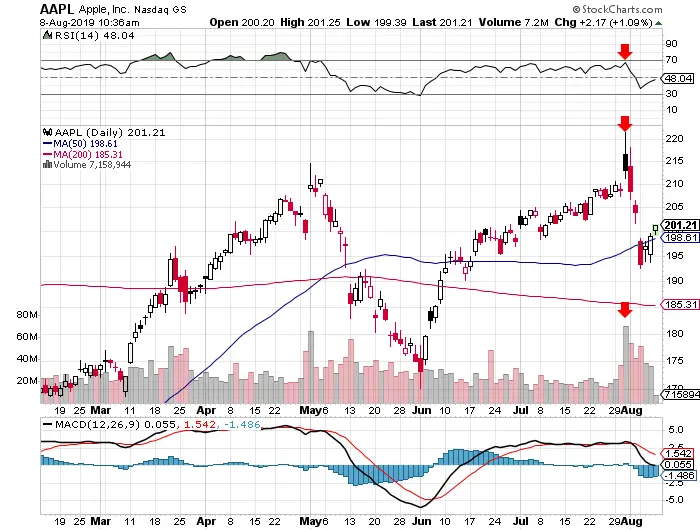Contrarian: a person who opposes or rejects popular opinion, especially in stock exchange dealing.
Being a contrarian trader is not as simple as going against the crowd on a trade. Doing the opposite of the popular opinion all the time will not win over time, instead it will likely put you on the wrong side of trends more than anything else.
The right way to be a contrarian is to use backtested signals with an edge to enter at opportune times that create good risk/return ratios on entry. If you want to be a contrarian it is very important to use stop losses to keep your risk of loss small if you are wrong. As a trend runs for a very long time the risk/reward ratio diminishes over time and the possibly of a reversal increases. If you want to bet against a long trend it is crucial to wait until the trend bends for a better probability for a reversal.
Here are four contrarian trading set ups:
Blow Off Top:
A blow off candle top where you open higher with a gap but close lower than the open. The interday trading range is rejected with a pinbar. This rejection happens on huge volume and it closes back under the 70 RSI.

Buying The Dip:
One good signal for buying a deep dip in an uptrend or a sideways market is a pullback to the 30 RSI. This is especially a good signal for index ETFs and big cap stocks. This is the general area where bounces happen as sellers run out of steam as the market has gone down too far and too fast. If price goes under the 30 RSI intrday and closes back over that is one possible signal to buy as it emerges back out of oversold. Closing under the 30 RSI is a danger sign that the downtrend may keep going. Wait for a confirmation of a reversal before buying an oversold dip for a better probability of success.

Buying a Break Out to All Time Highs:
Few people think about how contrarian it is to buy a break out to new all time highs. Few traders feel comfortable buying breakouts as they feel like it is too high and would prefer to by low and sell high. If a stock runs from $50 to $100 and doubles it will first have to break out to $51 and trend over time to that high price of $100. Sometimes breakouts go higher with no pullbacks until the trend is over. Many of the greatest trend following traders like Richard Dennis, Jesse Livermore, and Nicolas Darvas had systems that focused on break outs as momentum signals. At all time highs everyone is holding at a profit and there is little selling pressure from stop losses, profit taking is the primary selling pressure at all time highs. Short sellers will also create buying pressure as they buy to cover as a breakout trend gets underway. Breakouts work better if they emerge out of longterm price range bases.

While these examples are good risk/reward ratios the profitabilty of trading can only come from good risk management, honoring your stop loss and letting a winner run with a trailing stop when you position yourself on the right side of the move.
